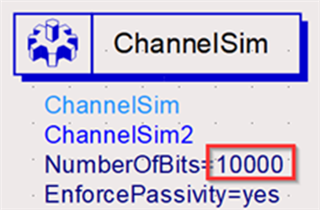Hi team,
My customer encountered some questions when they simulate our SN75LVPE5412 IBIS-AMI Model. Could you kindly help me to solve this?
- If there are recommended Pre and post side loss distribution when we want to achieve 54dB total link loss, can we give some materials about this?
- The customer's actual link loss is 46dB@16GHz and post-side is at least 28dB, they simulated our IBIS-AMI case with pre23dB+post23dB and the result can't pass, then they reduced the loss and simulated pre10dB+post28dB case, this case can pass. So why the simulation case can't support 54dB@16GHz?
- If the eq-bst value 0-19 can represent the gain of redriver?
- If you can kindly make time to support customer's question via webex? If yes, pls kindly tell me which time at next week suits your schedule
Thanks!
BRs
Kian Lin






